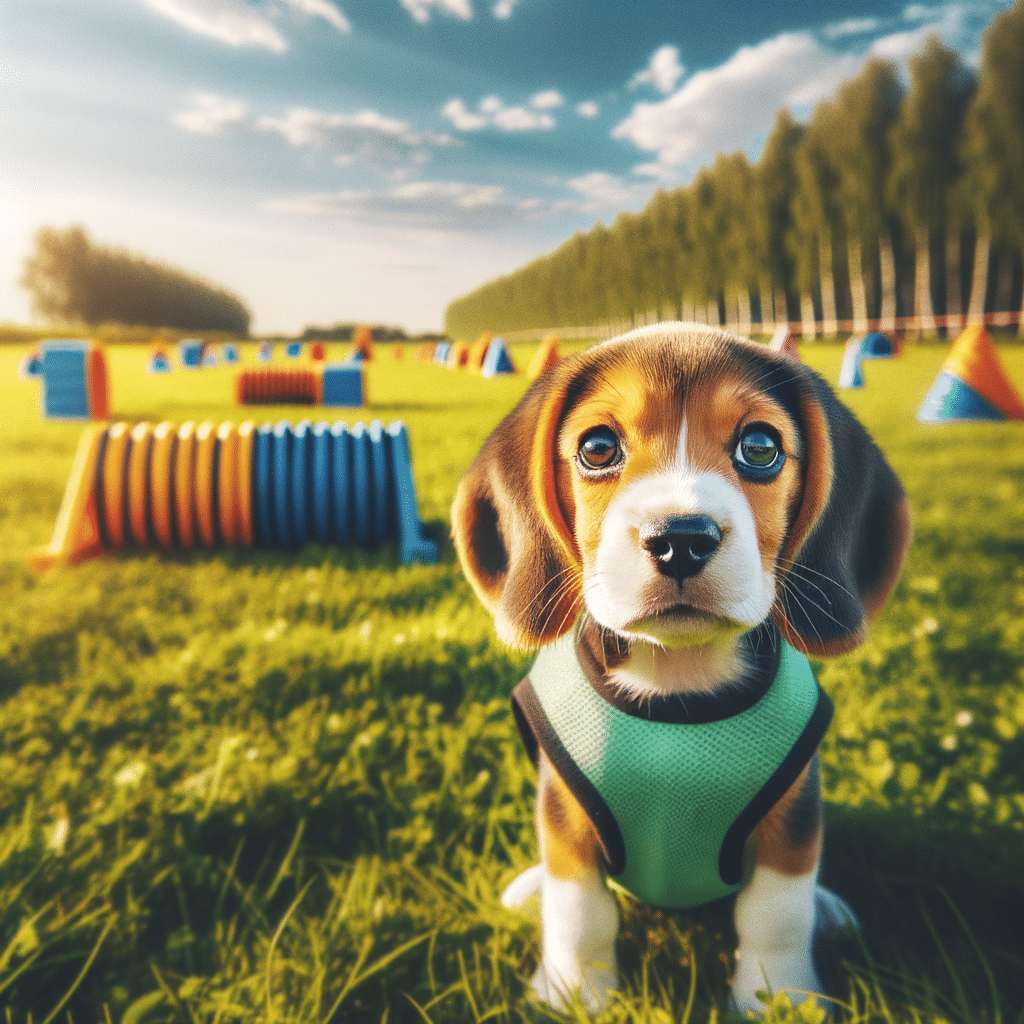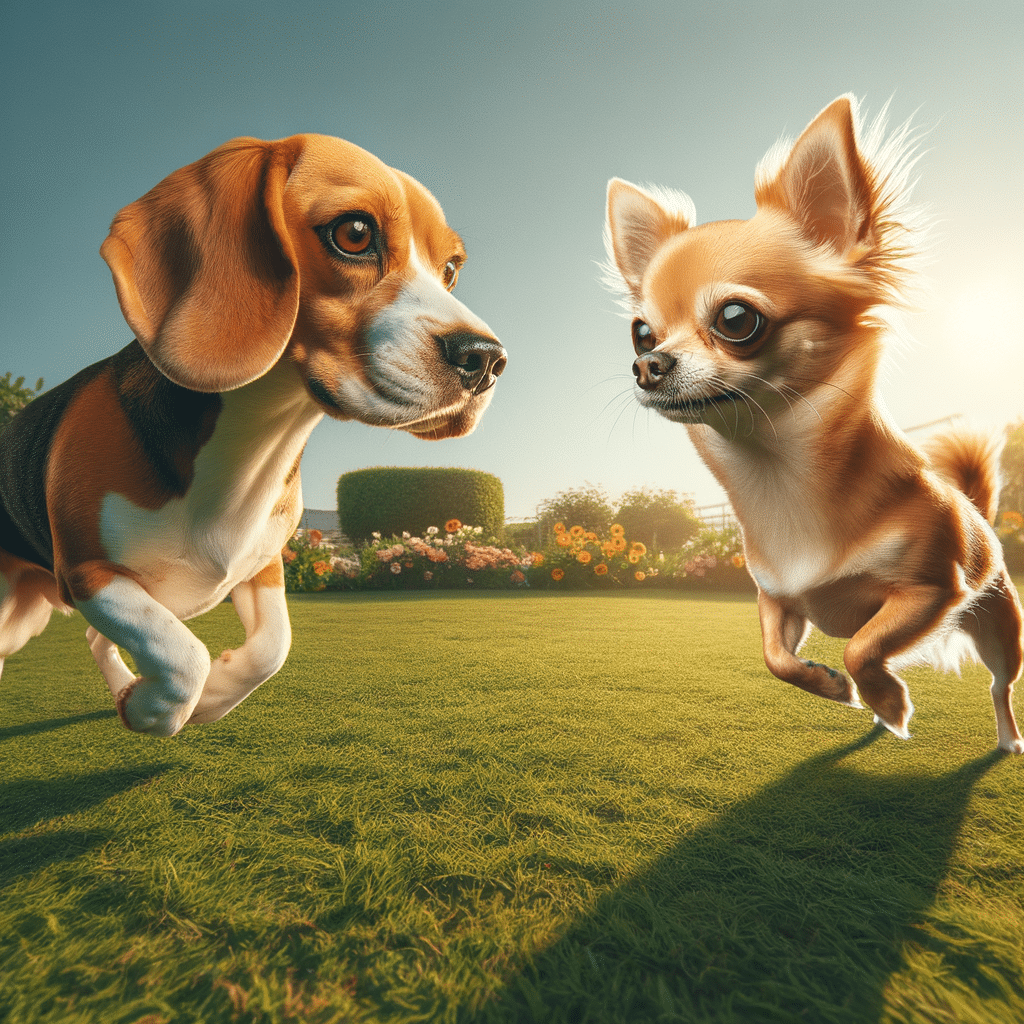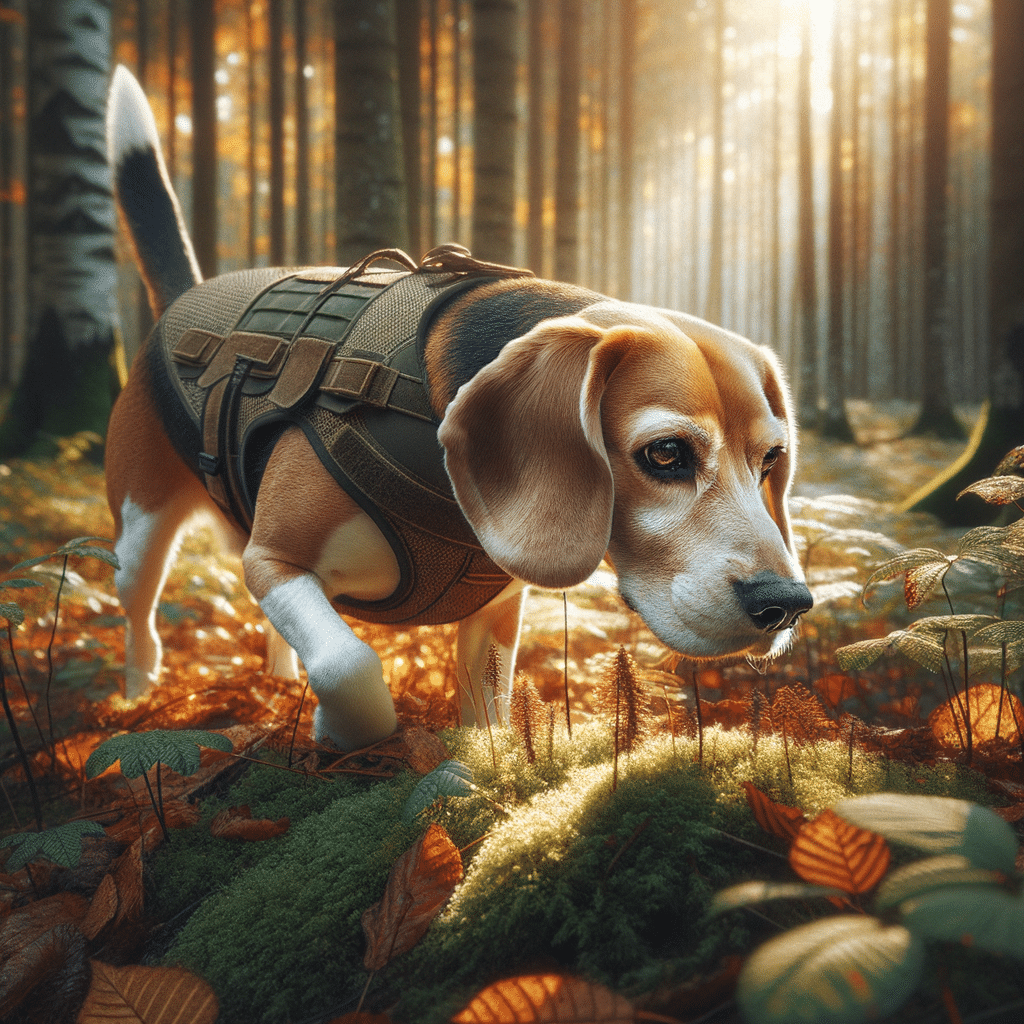Beagles have a keen sense of smell and strong tracking instincts. However, these behaviors can be challenging for owners to manage. Fortunately, beagles respond well to positive reinforcement dog training.
In This Article
This technique involves rewarding your pet to encourage the desired behavior. Positive reinforcement for beagles may include rewarding positive behavior with treats, praise, or play. This way, you encourage your pet to repeat the behaviors you want to see.
While positive reinforcement seems straightforward, using this strategy effectively requires consistency, timing, and the right choice of rewards. Recognizing and rewarding good behavior immediately helps beagles associate the behavior with a positive outcome. This type of conditioning strengthens the bond between you and your pet, instills good habits, and promotes a healthy learning environment. Moreover, positive reinforcement goes beyond simple obedience. It helps build a respectful relationship where the beagle feels motivated and happy to comply.
Highlights
- Positive reinforcement uses rewards to encourage good behavior in beagles.
- Consistency and timing are critical to successful training through positive reinforcement.
- This training method strengthens the bond between beagles and their owners.
The Basics of Positive Reinforcement Training
Positive reinforcement training uses rewards to encourage desirable behavior. It relies on consistently using rewards such as treats and praise, and your pet immediately shows the desired behavior.
Understanding Positive Reinforcement
Positive reinforcement training is centered around the idea that behaviors followed by favorable outcomes are more likely to be repeated. When a beagle performs a desired action and is immediately rewarded, the dog positively associates with that behavior. The keys to successful positive reinforcement training include:
- Timing: Give rewards promptly after the desired behavior to be effective.
- Consistency: Offering the same response to a behavior every time ensures clear communication.
- Patience: Approach each training session as part of a gradual learning process.
- Rewards: These can vary from treats and toys to verbal praise and physical affection, depending on what your beagle finds most motivating.
It’s helpful to start with simple commands and gradually build up to more complex tasks. Remember to keep the training sessions short and enjoyable to maintain the beagle’s interest.
Essential Commands and Behaviors
Commands create a basic vocabulary for communicating with your beagle. Some basic commands include:
- Sit: This is typically the first command a beagle learns. It creates the foundation for more complex behaviors.
- Stay: Teaching a beagle to stay helps the dog develop self-control and patience.
- Come: A reliable recall is crucial for your beagle’s safety and essential to their training.
Positive reinforcement training focuses on rewarding a beagle for correctly following these commands. Here’s what a straightforward set of behaviors to positively reinforce your pet might look like:
| Command | Behaviors to Reward | Type of Reward |
| Sit | Beagle sits on command | Treat, verbal praise |
| Stay | Beagle remains in place | Pat on the head, toy |
| Come | Beagle returns when called | High-value treat, cuddles |
Modifying your beagle’s behavior requires patience, consistency, and understanding what motivates your dog to show good or bad behavior.
Training Your Beagle Puppy
Training a beagle puppy requires patience and consistency. Focus on early training and socialization. Additionally, having a crate and potty training routine can help raise a well-behaved and confident adult dog.
Early Training and Socialization
In the puppy stage, a beagle’s education should begin with early socialization. Gently expose your pet to various people, pets, and situations to create positive associations and prevent fear or aggression later in life. Regular playdates and controlled exposure to friendly, vaccinated dogs can help them learn appropriate behaviors and become adaptable.
Key Components of Early Socialization
- Exposure to different people and controlled environments
- Introduction to various sounds and environments to reduce fearfulness
- Positive reinforcement to encourage desired behaviors
Crate and Potty Training Basics
Crate training creates a secure and personal space for your beagle to retreat. It is essential to potty training and helps your pet cope with separation anxiety. The crate should be safe, so always associate it with positive experiences like treats and toys. Crates are also beneficial for establishing a potty schedule, as dogs naturally avoid soiling their sleeping area.
Steps for Crate Training
- Introduce the crate and allow the puppy to explore it without force.
- Feed meals in the crate to create a positive association.
- Gradually increase the time the puppy spends in the crate.
For potty training, it’s best to start with a consistent schedule. This includes taking your puppy out first thing in the morning, after meals, following naps, and before bedtime. Always praise them when they eliminate outside, reinforcing the behavior you want to continue.
Potty Training Tips
- Regular outings to a designated potty area
- Praise and treats immediately following successful outdoor elimination
- Patience and consistency without punishment for accidents
Following these principles, you can train your beagle pup to be a well-mannered and friendly dog.
Advanced Training Techniques
As you progress beyond the basics, advanced training techniques focus on leash and obedience training and agility and mental stimulation. These techniques are critical for maintaining a well-behaved and mentally sharp beagle. These methods build upon the foundation of positive reinforcement to address beagle stubbornness, create a routine that your pet follows, and enhance the owner-pet bond.
Mastering Leash and Obedience Training
For beagles, leash training is the starting point for building obedience. The goal is for your beagle to walk calmly on a leash without pulling. This requires consistent practice and positive reinforcement to reward good behavior. An effective routine might look like this:
- Daily walks: Use short, frequent sessions to reinforce training.
- Heeling exercises: Teach the beagle to stay close and attentive.
- Distraction training: Use controlled environments to practice obedience amidst distractions.
- Reward system: Use a range of treats, praise, or toys as motivation to obey.
Consistency in training reinforces the desired behavior, turning a potentially headstrong beagle into a responsive and attentive companion during walks.
Agility and Mental Stimulation Exercises
Agility training provides both physical exercise and mental stimulation. These exercises can help manage your beagle’s high energy levels and satisfy their curiosity. A typical agility routine includes:
- Basic commands: Ensure your Beagle is responsive to commands like “Sit,” “Stay,” and “Come.”
- Introducing equipment: Gradually familiarize your beagle with agility obstacles.
- Complex sequences: As they advance, combine obstacles into sequences that require focus and agility.
- Regular practice: Maintain a steady practice routine to improve skill and confidence.
During agility training, reward your pup every time it navigates obstacles successfully. Focus on bonding with your dog and motivating good behavior. These exercises provide a physical outlet and deepen the trust and communication between you and your beagle.
Maintaining and Improving Behaviors
Creating and following a routine is critical to maintaining and improving dog behavior through positive reinforcement. This approach reinforces good manners and helps manage and redirect negative behavior. You can create some variety with indoor and outdoor training sessions.
Reinforcing Good Manners Indoors and Outdoors
To encourage a well-behaved beagle, reinforce good manners consistently, regardless of the environment. Indoors, this could involve rewarding the dog for obeying commands such as “Sit,” “Stay,” and “Come.” Your home provides a controlled environment with fewer distractions, allowing your beagle to focus and learn the desired behaviors through routine training sessions.
Indoor Manners
- Use positive reinforcement to acknowledge calm behaviors during meals and when guests arrive.
- Establish a routine with specific eating, playing, and training times to promote structure and discipline.
Outdoors, more distractions mean paying more attention to your pup. It’s essential to maintain the same level of discipline indoors and outdoors. So reward your dog for following commands despite the distractions.
Outdoor Manners
- Introduce distractions gradually during walks while reinforcing commands to keep the dog focused.
- Reward the dog for proper leash behavior, ignoring other animals, and not being aggressive.
Managing and Redirecting Unwanted Behaviors
When a Beagle shows unwanted behavior, redirection techniques become vital to the training. Positive reinforcement plays a pivotal role in managing such situations by providing the dog with an alternative, rewarding experience.
Redirection Techniques
Indoor Redirection
- When your dog starts chewing on inappropriate things, redirect its attention to suitable chew toys. Use praise and treats to reinforce this redirection.
- For excessive barking, teach your dog the ‘quiet’ followed by a reward if they comply.
Outdoor Redirection
- If pulling on the leash is an issue, stop walking and only proceed when the leash is slack, using treats for positive reinforcement.
- Use rewards to redirect the dog's attention back to you and maintain a confident and firm attitude.
Establishing a routine is critical for managing behaviors. It provides the dog with a clear structure about what is expected. By controlling the environment and using consistent discipline, beagles learn to associate obedience with positive outcomes.
Frequently Asked Questions
Employing positive reinforcement techniques can be a rewarding experience for beagle trainers. This section addresses common questions related to these methods.
What are effective positive reinforcement techniques for training beagle puppies?
For beagle puppies, start training early and offer treats or praise to reward desired behavior. Consistency and patience are key, as puppies respond well to a routine that positively reinforces good habits.
How does positive reinforcement compare to corrective methods in dog training?
Positive reinforcement focuses on rewarding good behavior rather than punishing undesirable actions. This builds a trust bond between the dog and the owner, which differs from corrective methods that can lead to fear and anxiety and interfere with learning.
Can you provide examples of how to use positive reinforcement with dogs?
You can use positive reinforcement by offering treats, praise, or playtime when a dog follows a command. Rewarding the dog immediately after the desirable action is essential to establish a clear association.
Is positive reinforcement a successful strategy for training all dog breeds, including beagles?
Positive reinforcement is widely successful across various dog breeds as it aligns with their natural desire to please their owners. With their intelligence and even temperament, beagles are particularly receptive to this training approach.
How can you implement positive reinforcement to teach a beagle commands like ‘no’?
To teach the ‘no’ command, redirect the beagle’s behavior to an appropriate action and immediately reward that response. Avoid punishment and instead reward the beagle for stopping the undesired behavior.






